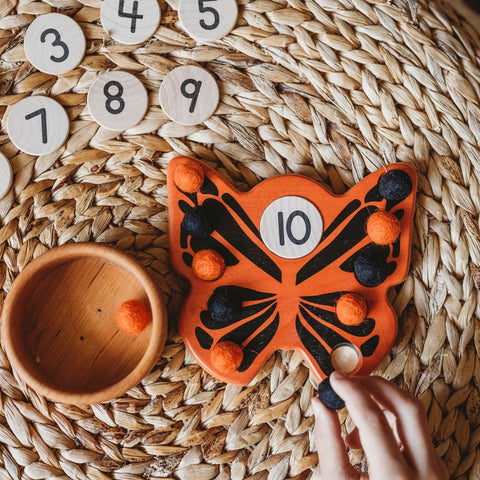Choosing an educational pedagogy can feel daunting to parents of young children. There's so much pressure to prepare them for their future academic success, and everywhere you look, a different learning style is touted as the best.
While we are partial to Waldorf education and its focus on the sanctity of childhood, there are many similarities and great benefits of the Montessori style. Today on the blog, we share where Waldorf Education and the Montessori Method overlap and what the key differences are between the two styles.

Finding Common Ground
There are many things that resonate with both educational pathways, the main one being educating the whole child and ensuring they have the necessary support for their social, emotional, physical, and ethical development. This holistic view of the child and a nurturing, natural approach are key features you will find throughout each pedagogy.
In the classroom or homeschool environment, you'll find a focus on offering high-quality, natural materials. The toys are simple and made from wood, and the space is a beautiful and peaceful place to learn and grow. Both Montessori and Waldorf believe in limited media use and focus on more hands-on and engaging materials for learning.
Most importantly, they each show deep respect for the child, recognizing them as a whole person with individual thoughts, needs and desires. This respect helps instill a lifelong curiosity and love of learning in the children who attend these types of schools.
Defining The Differences
In Montessori education, you follow the child. The adults are observing the child to determine their interests and then curate the environment to create a space for the child to explore and thrive.
Independence, self-sufficiency and freedom within a framework are key parts of this approach. Like in Waldorf education, children are provided with real child-sized tools, but begin working on tasks like cooking, cleaning and self-care at an earlier age. Along with these practical skills, core academics are introduced at age 3.
In the Montessori classroom, the focus is on learning. Here you will find stations filled with "work" the children can explore instead of toys for imaginary play. Books will contain realistic images and have no fantasy elements until the age of 6. Children are able to choose what they would like to work on and are responsible for putting their work away when they are ready to move on.
In Waldorf education the classroom environment is teacher-directed, and sheltering the innocence and magic of childhood are paramount. Imaginative play is the primary focus for the early childhood years with core academics being put off until 6 or 7 years old.
The arts span across the entire curriculum, from song, dance, painting and movement. There is a homelike atmosphere and children are taught skills like knitting and weaving to create their own toys and learning materials.
Waldorf education is "all-weather" meaning that children wear weather-appropriate clothing in order to spend a lot of time outdoors no matter the season. Being in and connecting with nature are fundamental parts of the pedagogy and is prioritized throughout the year.

While there are many more layers and facets to both of these education styles, more than we could cover in a simple blog post, these basic similarities and differences might help you decide which style sounds like the best fit for your family and indicate which you should explore more. Ultimately, what is most important is that your child is loved and treated with kindness and respect as they learn and grow. We love how both education styles overlap and have loved seeing our toys and natural materials in your Waldorf and Montessori classrooms and homes.
Excited to jump into learning? Explore our new Montessori-style learning toys from Mirus Toys, or Waldorf Family for whimsical Waldorf materials. As always, share your play with us by tagging us on Instagram or using the hashtag #bellalunatoys!














Leave a comment